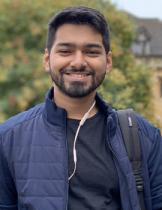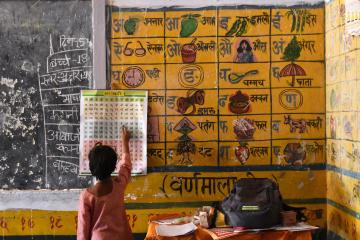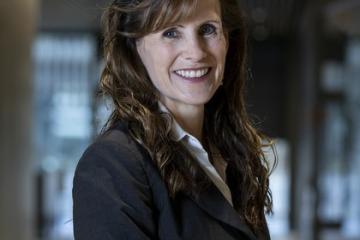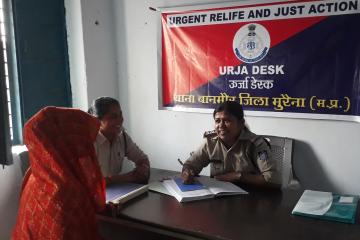
Researcher Spotlight: Ariel Zucker on applying economic theory to real-world solutions
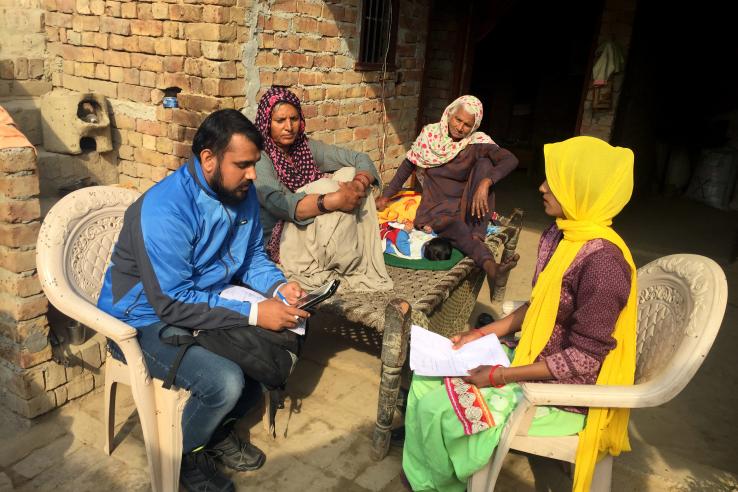
This podcast and blog series brings together researchers reflecting on their experiences conducting impact evaluations in India. From working in diverse local contexts to engaging with government and civil society, each episode offers a window into the realities of producing policy-relevant evidence on the ground.
In this episode of the Researcher Spotlight Series, host Sambhav Choudhury speaks with Ariel Zucker, assistant professor of economics at UC Santa Cruz. Ariel discusses her journey from an early interest in global health disparities to becoming a development economist specializing in experimental approaches. She shares insights from her research on health interventions for diabetes patients and groundwater conservation in India, highlighting how she balances theoretical frameworks with practical field realities to create meaningful, scalable solutions.
Want to learn more? Explore other podcast episodes in this series where we speak with Sandip Sukhtankar on his research in India, Shobhini Mukerji on her journey into development economics, Harini Kannan on scaling evidence-informed programs with governments, and Gautam Rao on co-producing evidence with policymakers.
Listen to our conversation
[Transcript]
Sambhav: Hi everyone, welcome to an episode of J-PAL South Asia's Researcher Spotlight conversation series. My name is Sambhav Chaudhury, and I'm a research associate at J-PAL South Asia.
Today, I'm in conversation with Ariel Zucker. Ariel is an assistant professor in the Department of Economics at UC Santa Cruz. Her research interests include improving health and environmental conditions for underserved communities, and she has experience working on projects that focus on countering behavioral biases in personal decision-making.
Ariel is an outdoorsy person who loves running—in fact, she won 20,000 rupees when she participated in a half marathon in Coimbatore during one of her field visits.
Hi Ariel, thanks for talking to us today.
Ariel: Hi, great to be here!
Sambhav: We would love to begin by asking you—what got you interested in development economics and the experimental approach?
Ariel: Yeah, so I think I love that you asked the question in that order since my interest really came in the order of development, then economics, and then experiments.
I think I decided I wanted to work in development probably in high school. I was really lucky to travel a lot—even before high school and then during high school—to different places, and I met a bunch of people, a lot of them my age, who just had such a different life path. I got particularly interested in development and health at that age because I was meeting people who were my age—15 or 16—who already had HIV, elephantiasis, or TB. I was totally flabbergasted by how different the health outcomes were in different parts of the world.
So I decided to get into development, and especially investing in health in countries where health outcomes were not so great, at a really young age. Then when I got to college, I got excited about economics just because I loved my economics classes, and that motivated me to apply for a PhD in economics. It was really during the application process and then when I went to graduate school that I got excited about experiments.
I love experiments for a lot of reasons, but I think the main reason is that you get to design them yourself. You work with a lot of people—policymakers, NGOs, or other organizations—but you get to think about what you want to do in the future rather than just focusing on what has already happened in the past. I love this natural, forward-looking angle that experiments allow you to take, in contrast to a lot of other methods where you're kind of stuck with what's already been done.
Sambhav: J-PAL's mission is evidence-based policy and decision-making. In this context, could you shed some light on how you balance the theoretical aspects with field realities in South Asia?
Ariel: Yeah, sure. Most of my research tries to put policy first and theory second, just because that's what got me interested and excited about development economics. And second, because it's kind of my comparative advantage—I think some people are more theoretically minded than me.
In a sense, I'm balancing the field realities with the policy impact. Sometimes you're trying to evaluate a policy or a program, but it has a lot of infrastructure necessary to roll it out in the way that you think it should be implemented at scale. It's like you're trying to evaluate a model of the program, and you just make a sort of quick and dirty version.
For example, with my co-authors Rebecca Dizon-Ross and Shilpa Aggarwal, we were really excited about understanding how a policy that incentivized people to hit daily step targets would impact their walking behaviors and their health. We were targeting people with diabetes, and we thought that if this program or policy were ever implemented at scale, there would be some automated system to collect daily walking data—either using a pedometer on their phones or some Wi-Fi hubs where they could automatically sync their pedometers.
But that kind of infrastructure was too expensive for an experiment. So instead, we gave people Fitbits, which have a way to automatically sync and send data back. However, since we were working with people who didn’t have access to Wi-Fi and didn’t set up that infrastructure, we had to adapt. Instead, we had daily phone calls go out to people, and they would self-report how many steps they had taken. That’s what we used to incentivize them, and at the end of the experiment, we went back and verified their step counts to ensure they weren’t cheating.
That is not how we would expect it to happen at scale, but the field realities were that people didn’t have access to Wi-Fi, and we didn’t have enough funding to set up the infrastructure we would need at scale—so we had to adapt to what was already there.
Sambhav: Thanks, Ariel, that was quite insightful. Sometimes, projects don’t align with our initial expectations, but they can still contribute to learnings in that sector. Could you discuss such a project you were a part of and what lessons you learned?
Ariel: Yeah, I'll talk a bit more about the same project where we were incentivizing people to hit step targets.
We wanted to compare incentives for walking to other low-cost programs designed for people with diabetes. We found a promising approach in the literature—an RCT in South India that tested SMS text messages with motivational messages about healthy behaviors, like eating a healthy diet, tailored to the South Indian context.
We expected it to at least work a little, but it didn’t work for us at all. People who got the text messages actually walked less. They didn’t report healthier behaviors, and there were no improved health outcomes like lower blood sugar or weight changes.
The big lesson here is the importance of replication—just because something worked in one context doesn’t mean it will work in another. Publication bias is also a factor—studies that find positive results are more likely to be published, so it’s critical to keep testing and validating findings.
Sambhav: That’s quite insightful and helpful for field researchers. Looking at the broader perspective, how do you see your work affecting policy decisions and improving lives?
Ariel: I really hope to design projects aimed at evaluating programs or policies that could be directly implemented. For example, incentives for walking could be scaled up through government or large health systems in South Asia.
I also have another project on reducing groundwater usage. A lot of farmers in India overuse groundwater and electricity for irrigation because they don’t have to pay directly for the water. We implemented a program where instead of charging farmers for electricity, we paid them to use less. We worked with AKP in Gujarat to implement this model.
So far, it looks like the incentives were effective—farmers did respond by reducing their water use, even with small incentives. Now, we’re working on final outcome data to see whether reducing water use also affects yields or if farmers are just using water more efficiently.
Sambhav: That sounds like a fascinating project! I’m excited to see what the results show. Those were all the questions we had. Thank you so much for your time—this was a really insightful conversation.
Ariel: Thanks, Sambhav! So nice to talk with you.
